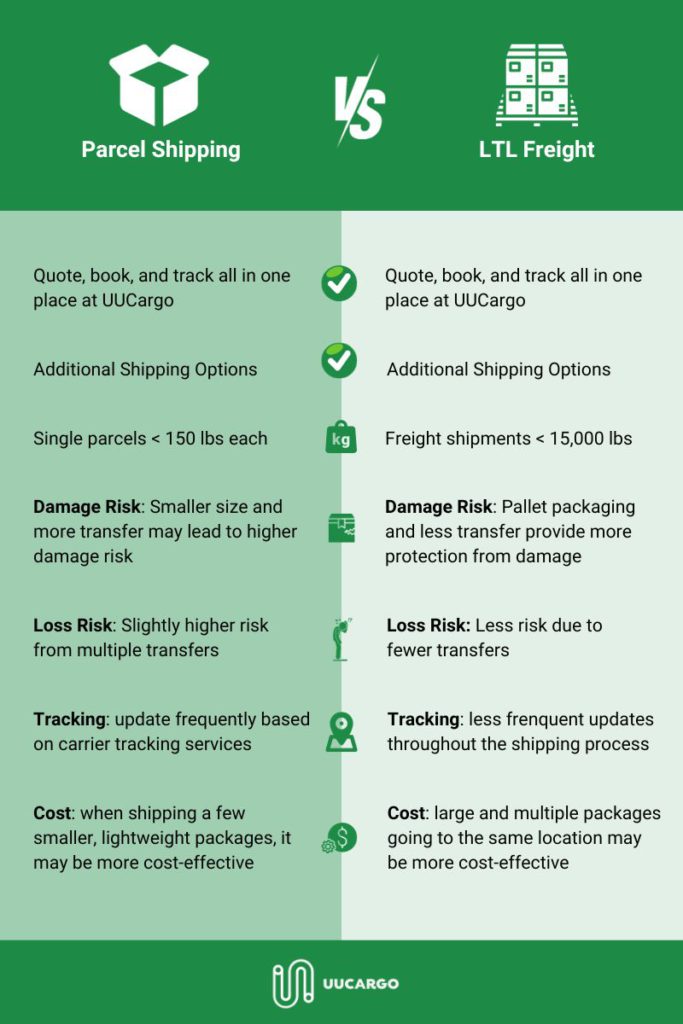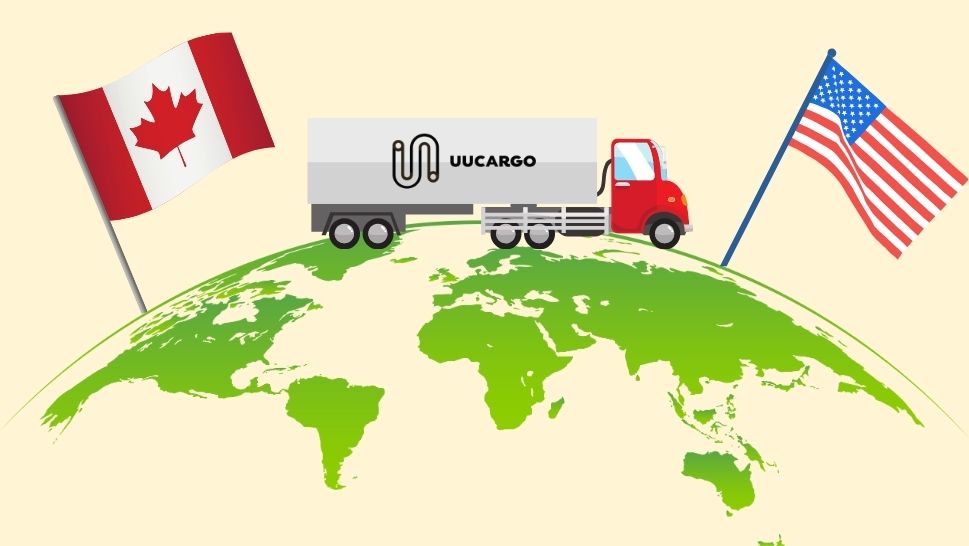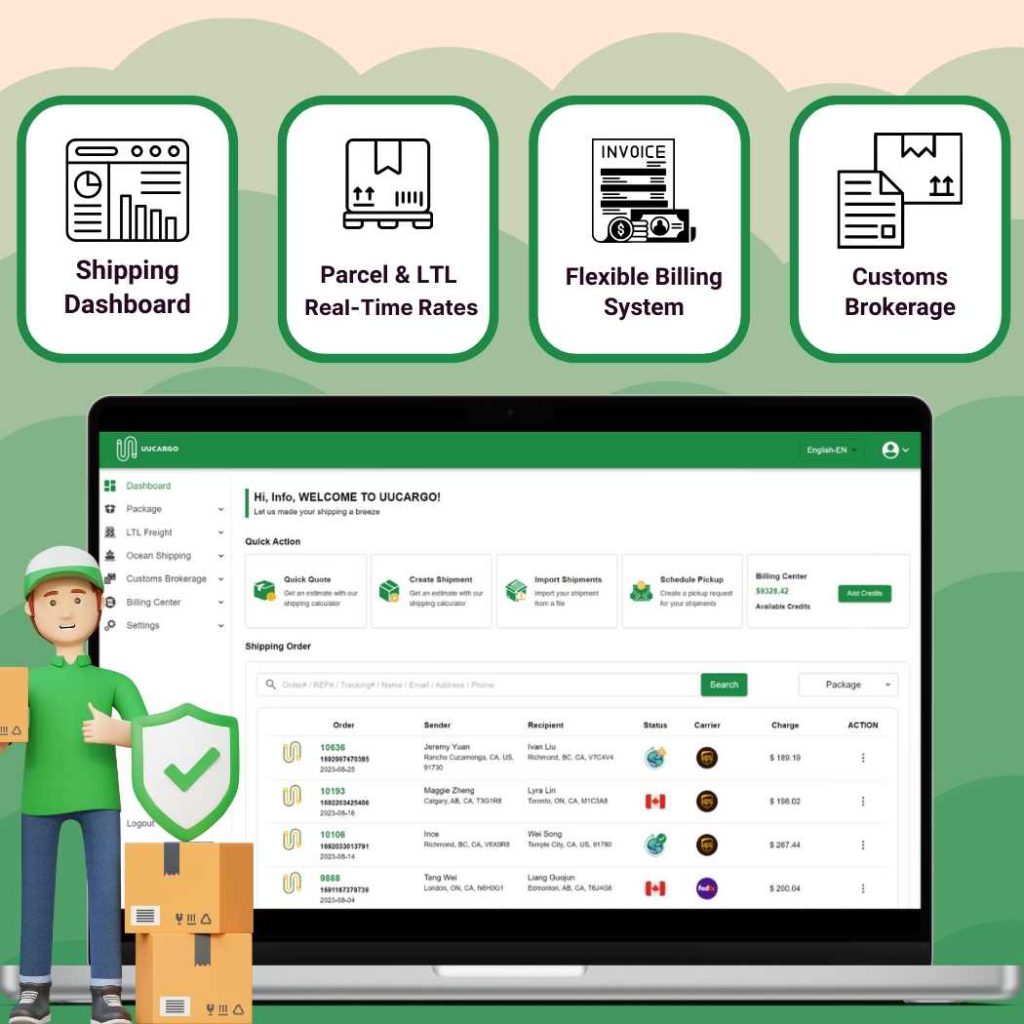Key differences between parcel and LTL shipping
Parcel and LTL shipping serve different purposes and choosing between them isn’t always straightforward. Parcel shipping is typically used for smaller packages under 150 pounds, while LTL shipping handles larger, bulkier shipments. This infographic offers a quick comparison of the two methods, shedding light on their distinct features to help you decide which suits your business’s requirements, ultimately saving you both time and money.
The Ins and Outs of Parcel Shipping
Parcel shipping is ideal for a few packages that are lightweight and manageable without assistance. While parcel shipments go through more checkpoints, increasing the risk of loss or damage, they also provide closer shipment tracking. This method offers ease and flexibility, especially with pickup processes. With lower driver pickup fees and readily available drop-off locations, parcel shipping is a convenient and cost-effective choice for sending smaller packages. The infographic below will provide you more information you need.

Why you should choose Parcel Shipping?
Parcel shipping is most suitable for sending a limited number of packages, each weighing less than 150 pounds and manageable without additional help. Typically, these packages are smaller in size compared to those handled by LTL shipping, leading to a distinct set of advantages and challenges.
One characteristic of parcel shipping is the involvement of numerous checkpoints and potential transfer points throughout the delivery process. While this increased handling may elevate the risk of misplacement or damage for smaller packages, it also facilitates more precise tracking of shipments. This detailed tracking capability benefits both the sender and the delivery service by enhancing visibility and control over the shipment’s journey.
When it comes to ease and flexibility, parcel shipping often has the upper hand, especially regarding the pickup process. The fees for driver pickups are generally lower for parcel shipping compared to LTL shipping, adding to its convenience. Furthermore, for those preferring not to have drivers come to their location, the availability of drop-off points offers a practical solution. Many parcel carriers maintain drop-off locations with extended business hours, allowing for easy and timely shipment drop-offs. Some even offer after-hours drop boxes, perfect for small package deliveries.
Find the Cheapest Rates
The Role of Less Than Truckload (LTL) Shipping
LTL shipping stands apart as it primarily caters to larger, bulkier packages that exceed the scope of standard parcel shipping. Ideal for transporting bulky items or freight with unique dimensions, LTL shipping is a preferred method for loads that are too large for parcel services but not large enough to warrant a full truckload.
In LTL shipping, goods are typically palletized and shipped together, ensuring that all components of a shipment reach their destination simultaneously. This consolidation often results in fewer checkpoints throughout the shipping process. While this can mean reduced handling and a lower probability of loss or damage, it also leads to less frequent tracking updates compared to parcel shipping.
LTL is particularly beneficial when transporting multiple items to a single location. It offers a cost-efficient solution, even for smaller and lighter boxes, by allowing for the consolidation of various items into one unified shipment. For instance, shipping multiple boxes on a single pallet through LTL can be more economical than sending them individually via parcel shipping.
Opting for LTL Shipping: When Is It the Right Choice?
LTL shipping is an effective solution for shipments that exceed the 150-pound threshold or comprise a larger quantity of packages than typical parcel shipping can accommodate. This mode is ideal when you need to send all your packages to the same location and your freight volume is significant, yet not sufficient to fill an entire truck. LTL strikes a balance between cost and efficiency for medium-sized shipments, offering a middle ground between parcel shipping and full truckload shipping.
By understanding when to utilize LTL shipping, businesses and individuals can optimize their shipping practices, ensuring that larger shipments are handled efficiently and cost-effectively. LTL shipping thus becomes a strategic choice for those dealing with substantial cargo sizes, seeking to streamline their logistics while keeping costs in check.
Maximizing Efficiency in Your Shipping Strategy
Incorporating a mix of parcel and LTL shipping can maximize efficiency and cost-effectiveness. Understanding your shipment sizes, frequencies, and destinations is key to selecting the right method. Using advanced platforms like UUCargo, you can seamlessly switch between parcel and LTL shipping, ensuring that each shipment is handled in the most appropriate and cost-effective manner.
Leveraging UUCargo for Simplified Shipping Decisions
Conclusion
Understanding the nuances between parcel and LTL shipping is essential for any business looking to optimize their logistics in 2024. By assessing your shipping needs against the benefits of each method, and utilizing versatile platforms like UUCargo, you can ensure that your shipping strategy is not only cost-effective but also aligns with your business goals and customer expectations.





